Xiaomi Mi 11 review: A cut-price flagship killer
This smooth-scrolling, feature-rich powerhouse ticks almost every box
-
+
Sleek build
-
+
Top-tier performance
-
+
Great display
-
+
Packed with features
-
-
Sub-par battery life


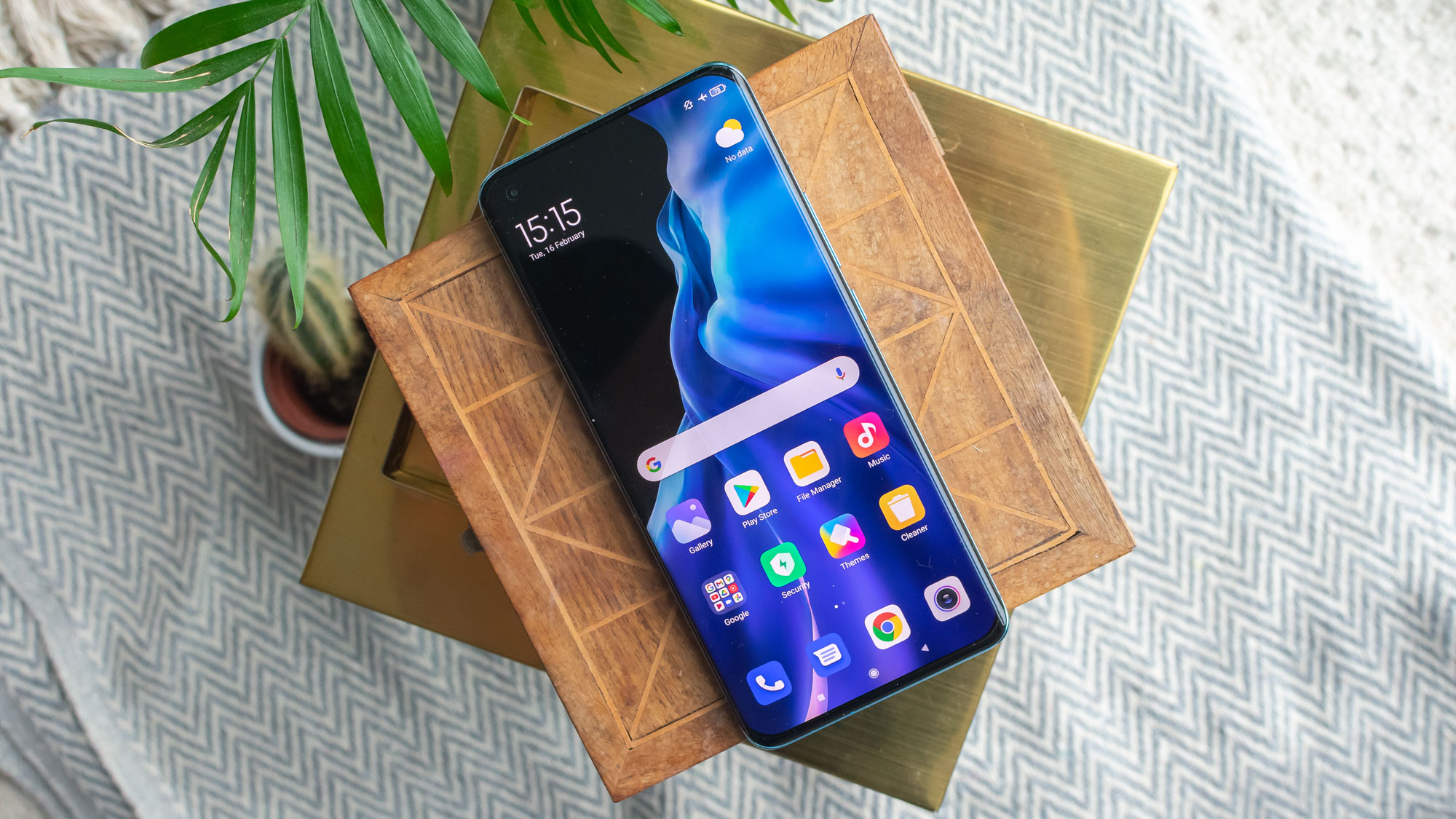
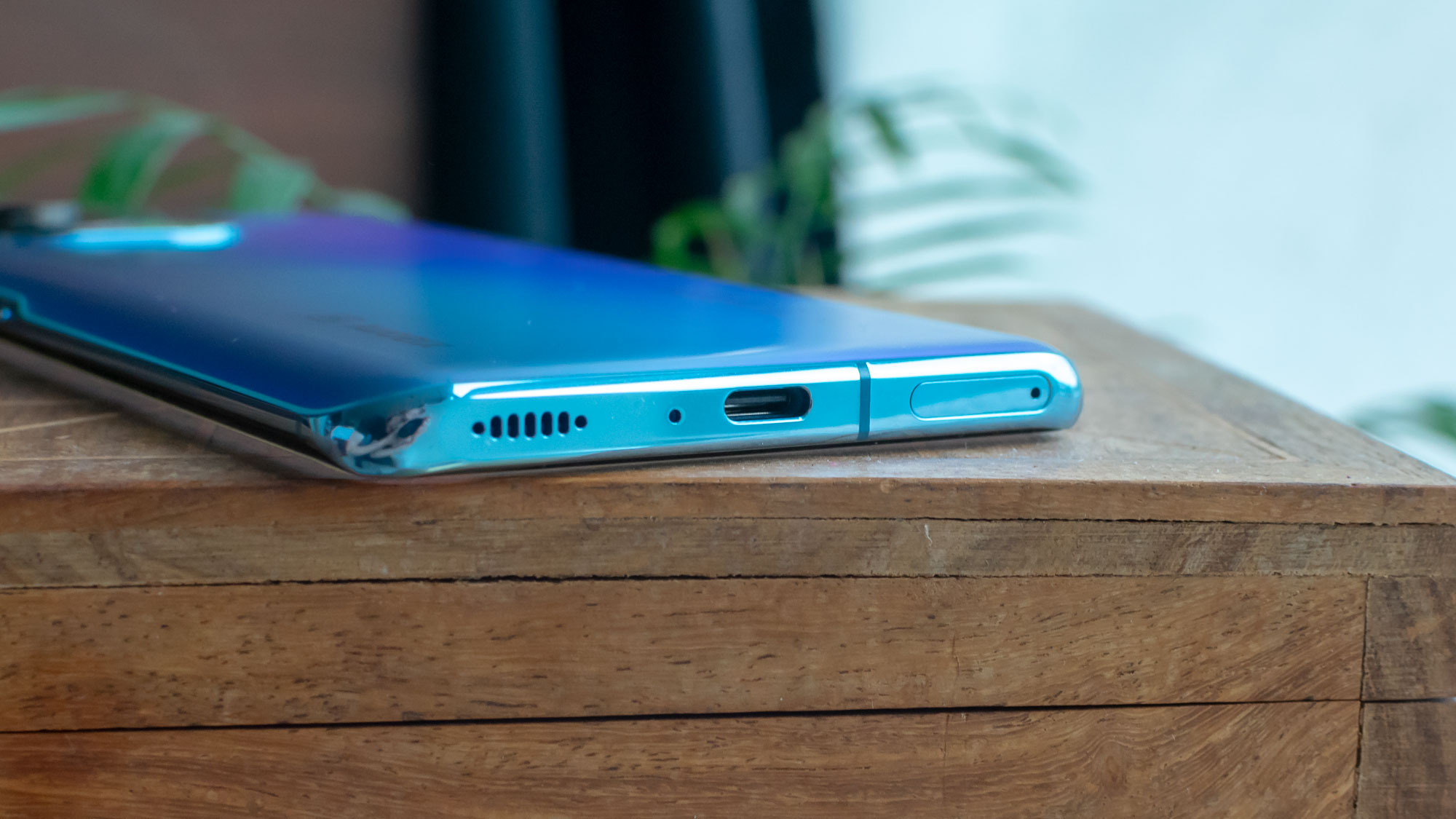

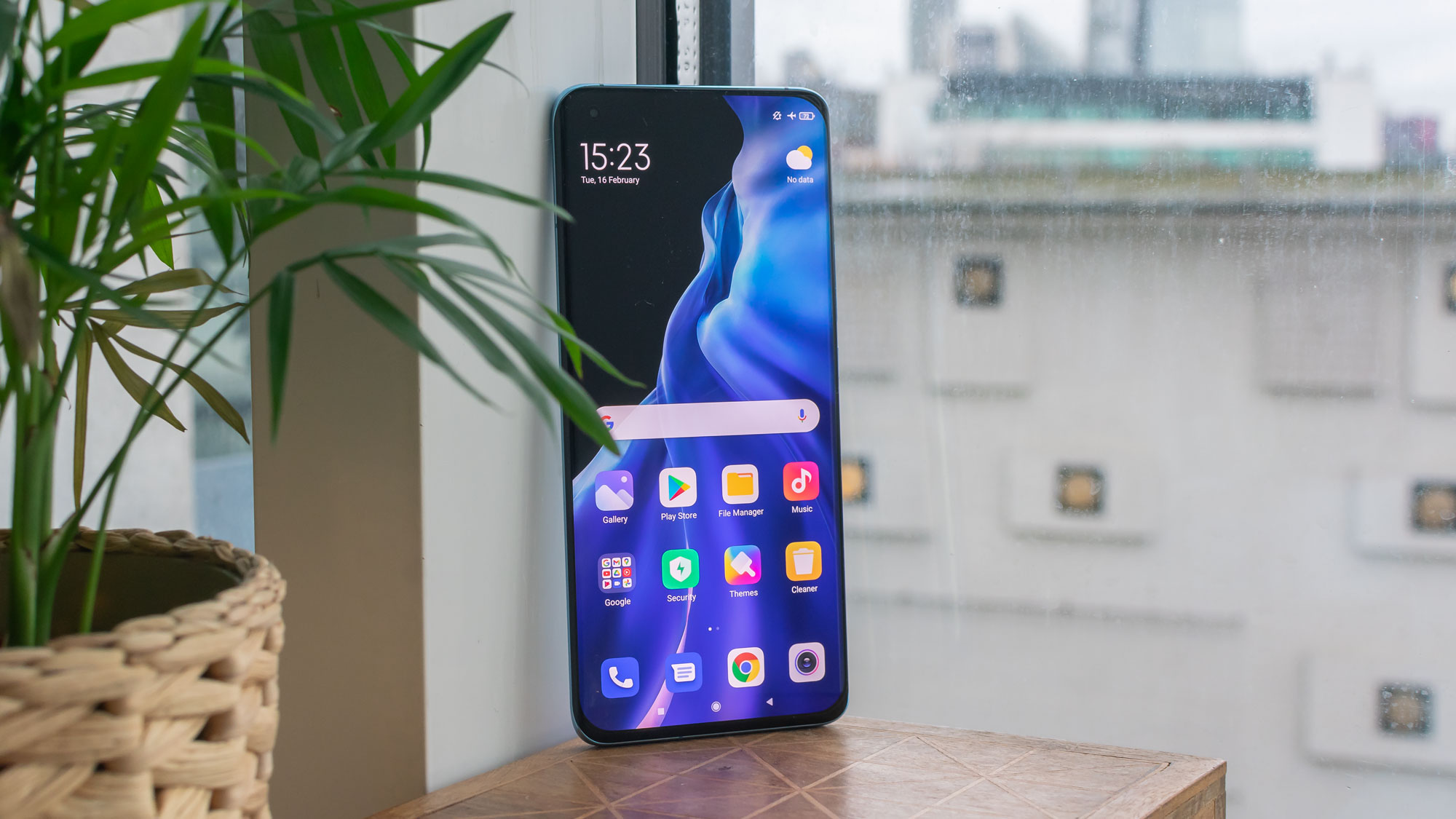
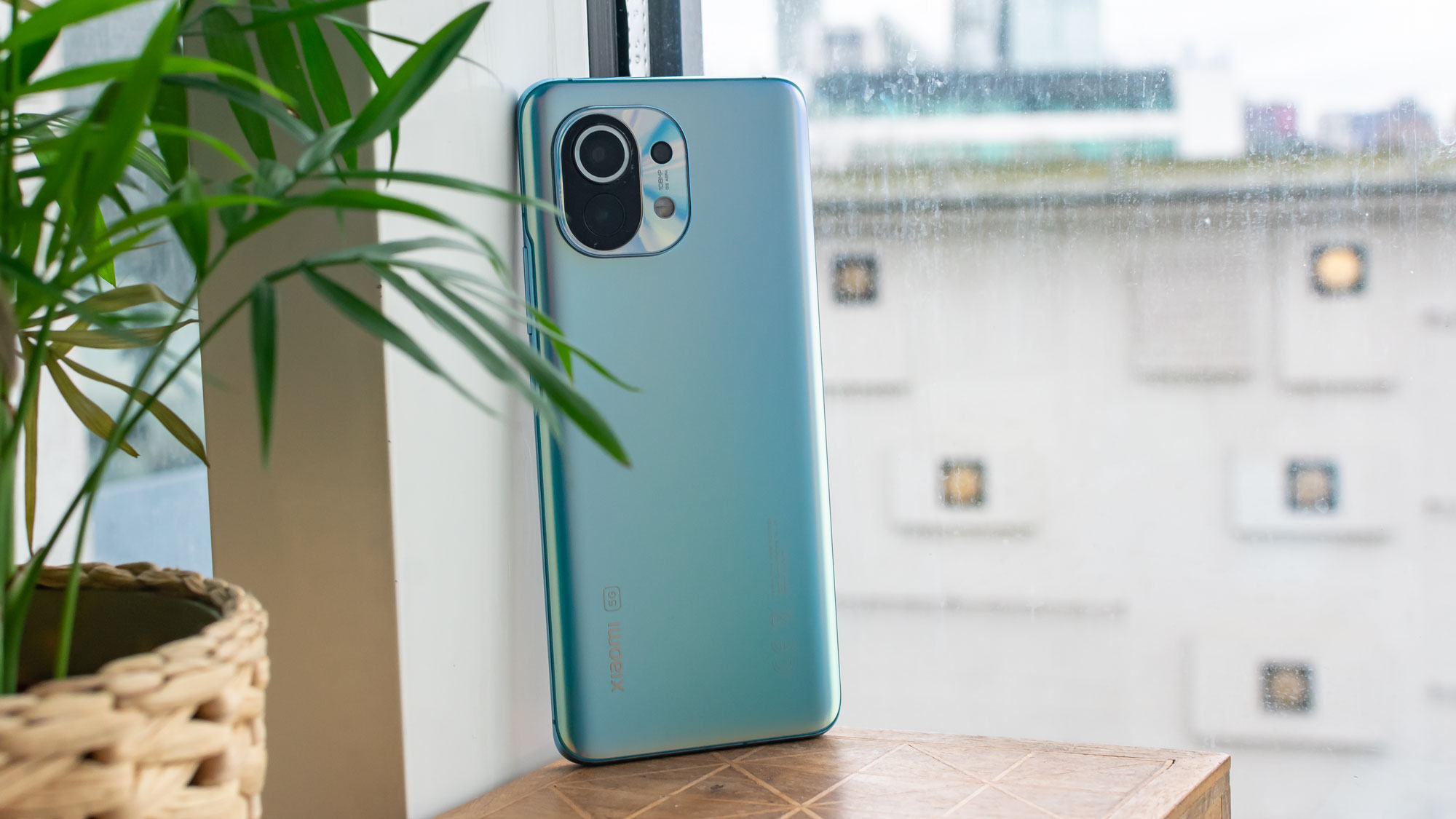
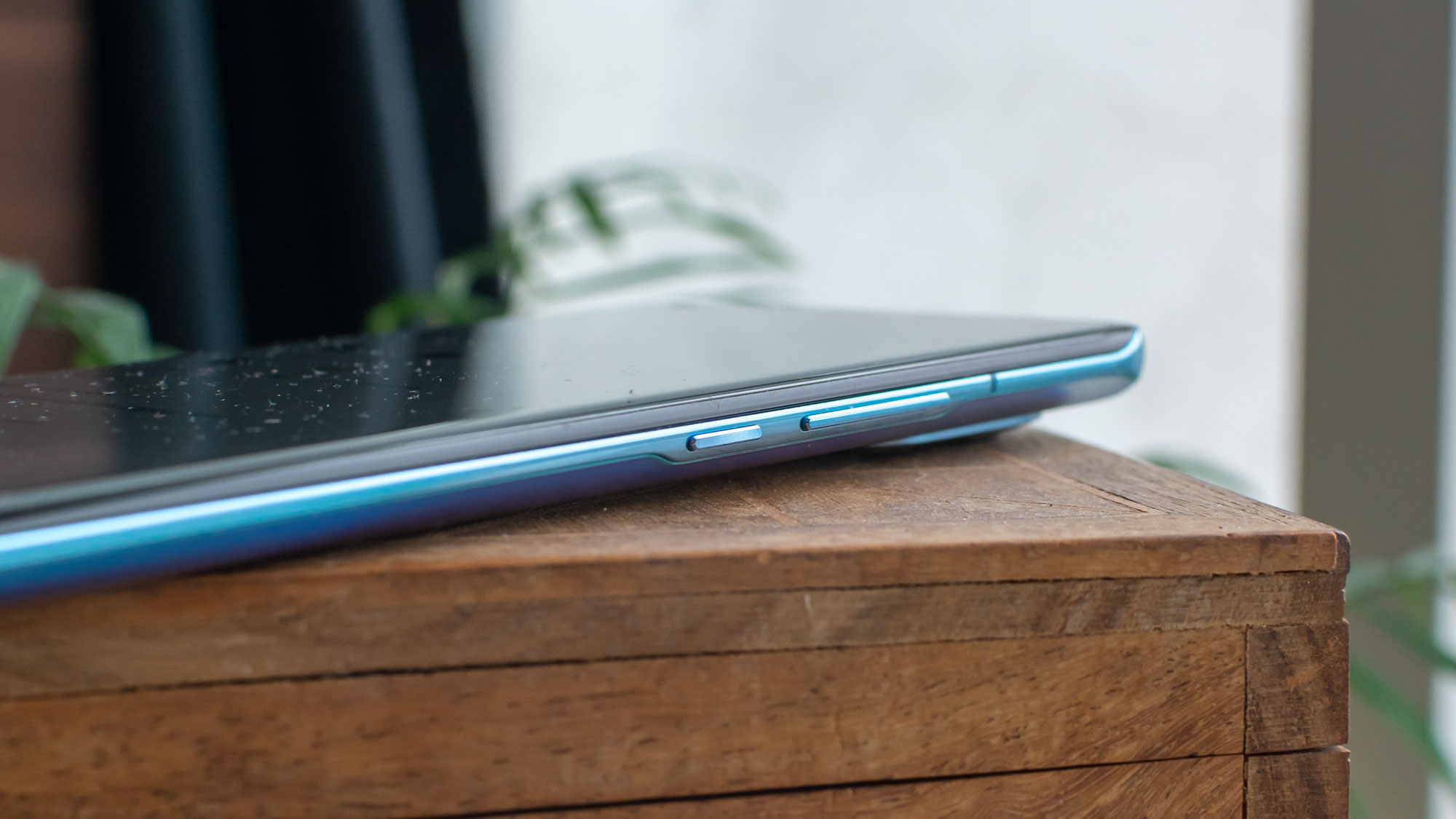
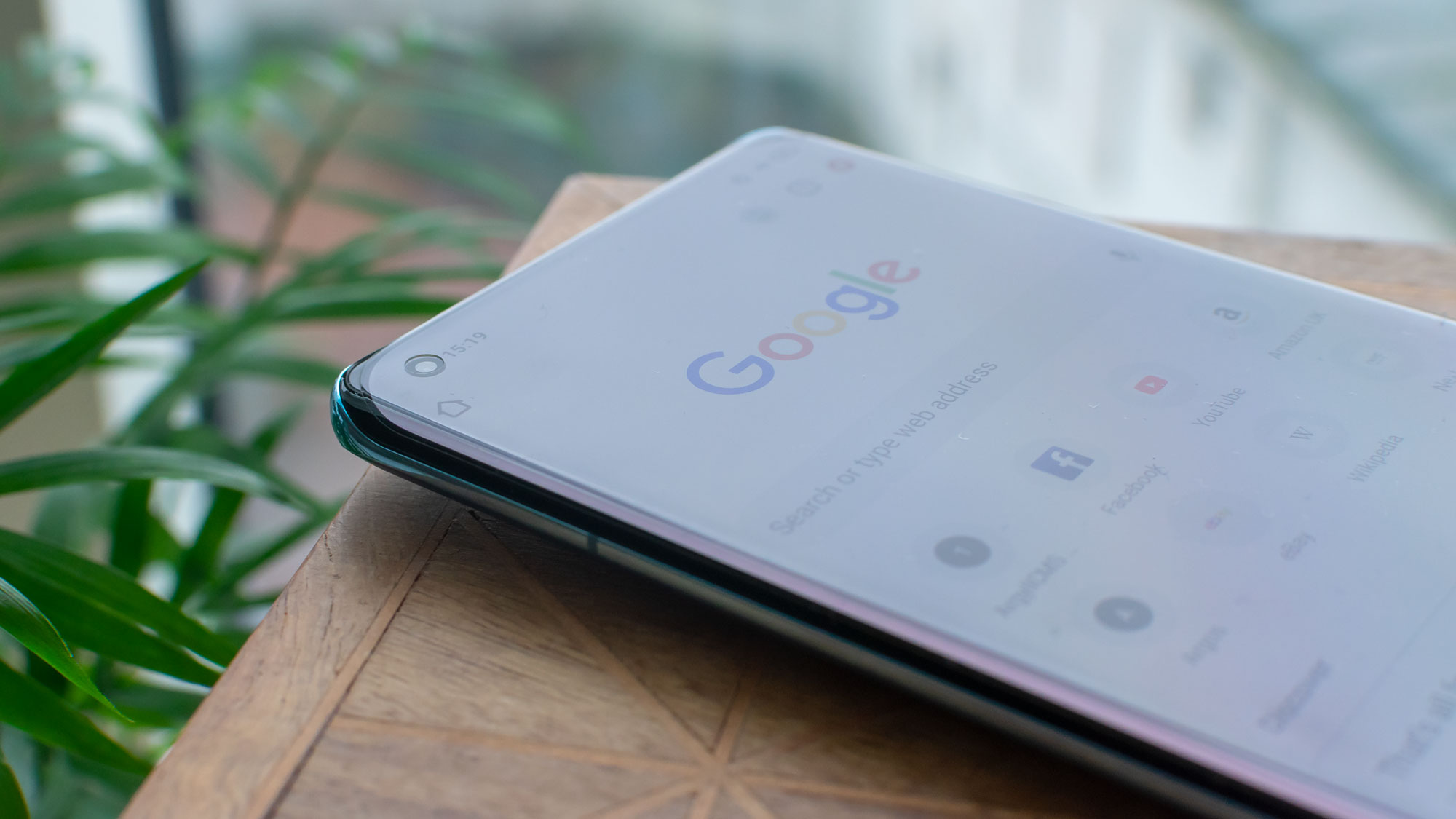
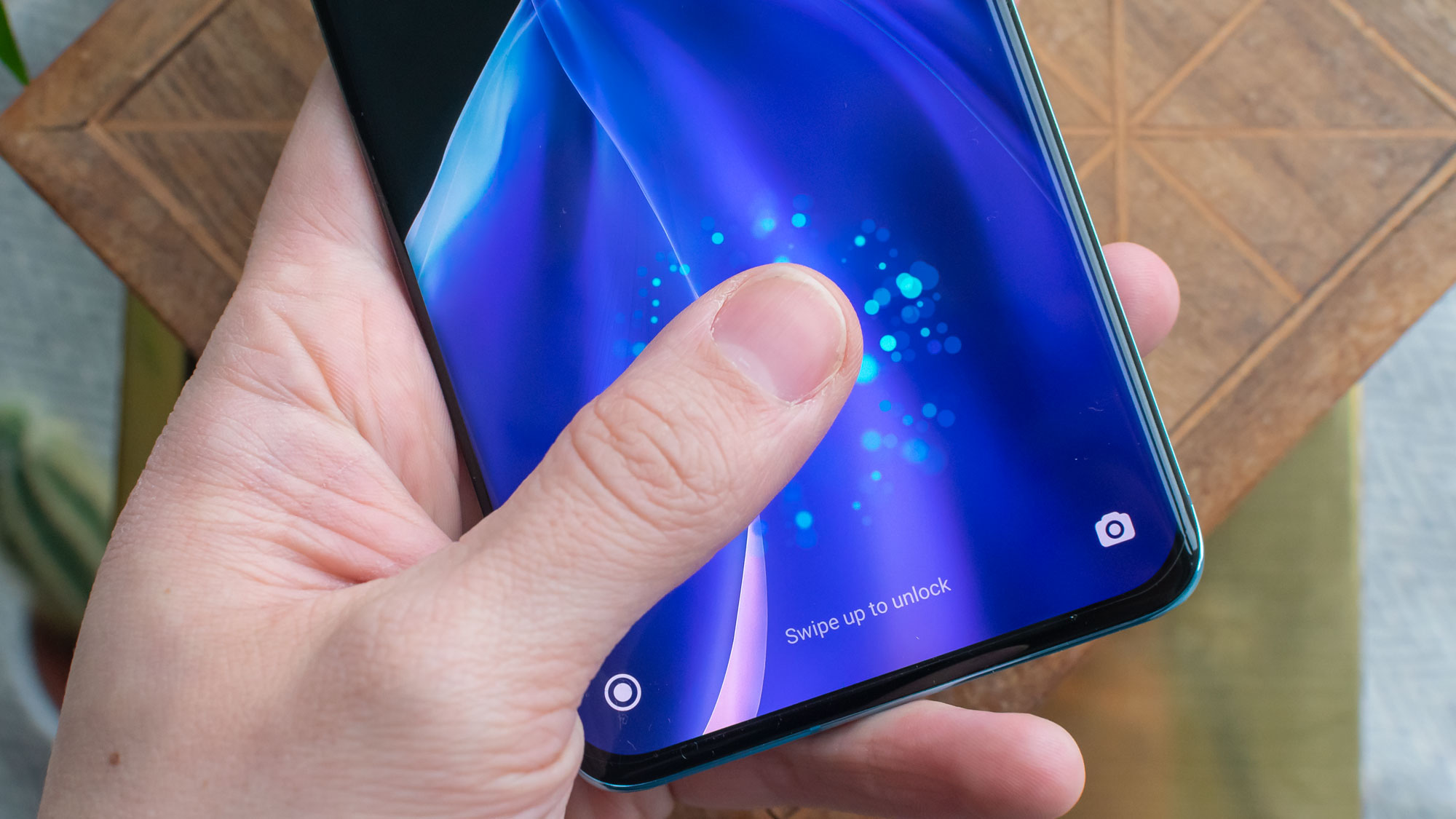
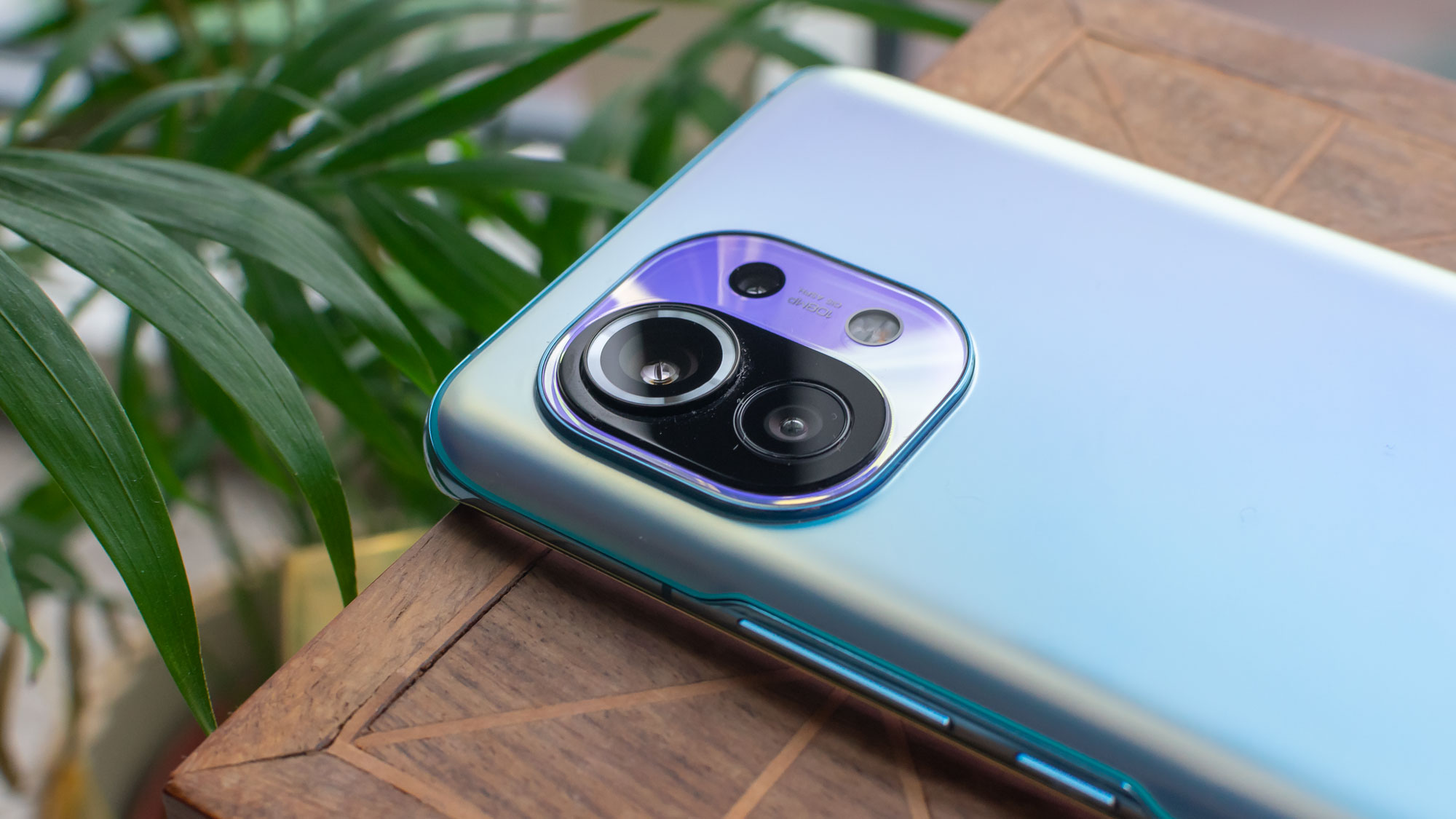
With a string of solid releases in recent years, Xiaomi is one of many Chinese manufacturers hoping to take advantage of Huawei’s dwindling popularity. Some of its latest phones have been fantastic, such as the bargain-priced Redmi Note 10 Pro, while we praised last year’s Xiaomi Mi Note 10 as a superb mid-range handset with a great camera and battery life.
The Xiaomi Mi 11, by contrast, is a turbo-charged, supersized flagship hoping to outclass the biggest players on the market, including the Samsung Galaxy S21 Ultra and the iPhone 12 Pro Max. What’s more, it’s considerably cheaper than either. With a glorious 6.8in panel and top-spec hardware to complement a rich feature set, the Xiaomi Mi 11 might be one of this year’s most cost-effective and powerful flagship killers.
Xiaomi Mi 11 review: Design
The Mi 11’s aluminium chassis impresses with its iridescent frosted Horizon Blue finish. Although this variant certainly catches the eye, it’s also a magnet for smudges and fingerprints, so you’ll need to regularly wipe it. The Mi 11 is also available in a ‘Midnight Gray’ variety, which is more sophisticated but certainly duller.
The device feels comfortable to hold thanks to its matte finish and premium build quality, although design-wise it isn’t the most original handset. An expansive dual-curved panel and hole-punch camera in the top-left corner resembles the Oppo Reno4 Pro 5G design, while the positioning of its three rear camera lenses in a rounded square is similar to the elevated platforms in the most recent iPhones. This segment of the Mi 11 is reflective, however, which contrasts well with its iridescent rear.

More encouragingly, for a device as large as this, its dimensions are compact, and at 196g it’s impressively light. By comparison, the newly-launched Oppo Find X3 Pro is almost identical in size and weight, while the 6.9in Samsung Galaxy S21 Ultra weighs roughly 30g more and is noticeably bulkier.
Xiaomi Mi 11 review: Display
The Xiaomi Mi 11’s crisp 1,440 x 3,200 6.8in AMOLED display is one of its most promising features. Not only does its elegant dual-curved panel make the screen feel as expansive as possible, but a silky smooth 120Hz refresh rate combines well with bright, vibrant colours to really draw you in.
With a healthy maximum brightness of 472cd/m2 and a decent 95.3% coverage of the sRGB colour spectrum, the Xiaomi Mi 11 is measurably superior to the 6.8in Samsung Galaxy S21 Ultra. An excellent average Delta E reading of 1.06, too, underlines very accurate colour reproduction. Samsung’s plus-sized flagship, by contrast, registered a maximum brightness of 395cd/m2 and 94.1% coverage of the sRGB colour spectrum. While the iPhone 12 Pro Max has one of the best smartphone displays money can buy, the Xiaomi Mi 11 isn’t far behind and its refresh rate is a massive bonus.

Its default display settings are great as far as vibrancy is considered, but the phone allows you to finetune colours to your liking or even swap between the sRGB, and DCI-P3 colour gamuts, as well as make adjustments to RGB variables, hue, saturation, contrast and brightness.
Elsewhere, users can activate an ‘AI image engine’ to enhance the quality of images and videos or use ‘super resolution’ to upscale SD footage, alongside HDR enhancement, and MEMC, which artificially improves framerate. We should note that you can’t activate all these options at once, and beyond more vibrancy with HDR enhancement being activated, the differences they make are minor, but not insignificant.
Xiaomi Mi 11 review: Hardware and performance
The Xiaomi Mi 11 is fitted with the high-end octa-core Qualcomm Snapdragon 888 mobile CPU, alongside 8GB of RAM and 128GB of internal storage. This is sadly unexpandable, although there’s also a 256GB model on sale in the UK.
Although most flagships are fitted with 12GB RAM, the Xiaomi Mi 11 still managed to rank as the fastest Android smartphone we’ve tested to date. Geekbench 5 scores of 1,129 and 3,667 for single-threaded and multi-threaded performance are bested only by the iPhone 12 and its A14 Bionic chip. The Samsung Galaxy S21 Ultra came close to matching the Mi 11 in terms of its multi-threaded performance with a result of 3,549, but single-threaded performance fell behind with 957.
While it’s exceptionally powerful, the device is also exceptionally power-hungry, with an underwhelming 16hrs 38mins battery life. This is stronger than the iPhone 12 Pro Max’s 16hrs 26mins but well below the stonking 22hrs 34mins standard set by the Galaxy S21 Ultra. Most high-end flagship devices tend to fall between 17hrs and 19hrs, so it isn’t a terrible result. When you activate all of the Mi 11’s high-end settings, however, you can really feel power draining over the course of a day.
To compensate, the device offers great power management settings, including a stripped-back ultra battery saver mode. Fast-charging, too, is exceptional, with the device surging to 100% in just 45 minutes with its in-box charger, alongside full capacity wireless charging capacity at 53mins, and 10W reverse wireless charging.
Xiaomi Mi 11 review: Camera

While solid in isolation, the Mi 11’s three-lens camera array is somewhat lacking compared with other recent Xiaomi devices, namely the Mi 10 and Mi Note 10 handsets. The main 108MP lens combines with a 13MP wide lens and 5MP macro lens to produce a decent array of images, although the absence of a fourth lens for depth limits optical zoom to x2. You’ll need to rely on digital zooming thereafter up to x30, which can be plagued with noise the further you go.
Nonetheless, the lenses included with the Mi are more than capable of capturing a great variety of images under various conditions. The main 108MP camera produces crisp and balanced photographs, although this detail and clarity is slightly lost as you step back to default wide-angle shooting, with images feeling marginally underexposed and lacking in the same level of clarity.
Software-based image processing enhancements serve well to finetune the shooting experience, too, although these can be inconsistent at times. The Mi 11’s Night mode, for example, works really well to fill the frame with lots of light, but doesn’t effectively bring out colours. The Xiaomi also benefits from a comprehensive Pro mode alongside a plethora of other modes, including Supermoon shooting and long exposure mode, along with Instagram-style filters.
Impressively, you can capture film in 4K at 30fps, or 1080p at up to 240fps and 720p at up to 960fps. The quality is great, and it’s free of any input lag too. You can also enable Dual Video, which captures footage from both the front-facing and rear lenses in a split-screen format. ‘Movie effects’ fall in the gimmicky camp, but let users enhance footage in many playful ways, including time-freeze or night time-lapse effects.
Xiaomi Mi 11 review: Software and features
With MIUI Global 12.0.3, based on Android 11, the Xiaomi is packaged with a comprehensive set of features, from user interface (UI) enhancements to software-based protections, and a fully-fledged enterprise mode.
In-built security tools include a deep clean, as well as a security scanner, and Dual Apps, which allows you to clone software for parallel use. There’s also a centralised security hub for permissions and privacy settings. Fingerprint scanning is temperamental, unfortunately, but you can bypass this with the Mi 11’s smooth facial recognition system. The dedicated Enterprise Mode also allows IT administrators to manage a fleet of Xiaomi smartphones remotely.

One-handed mode is also available in several screen sizes, while gesture-based shortcuts let you access features like the camera or flash. You can even pre-programme your own. Apps can be kept running in the background too, using ‘floating windows’ that you can shift around on the screen while accessing other services. Finally, connectivity is augmented with an IR Blaster that allows you to send signals to a host of devices including TVs - a feature that we haven’t seen on a mainstream device since the Galaxy S4.
Xiaomi Mi 11 review: Verdict
When you consider everything the Xiaomi Mi 11 has to offer, from its breakneck performance to an extensive set of features, it’s a steal at its current price. While its design hardly breaks any new ground, it’s nonetheless a well-built and dazzling flagship that impresses in several key departments, especially its 120Hz display. The difference in performance in high-end phones matters less with each passing generation, but the Mi 11 offers far more bang-for-back than many of its premium competitors might.
Nevertheless, a sub-standard battery life might be more of a turn-off, although it still lasts longer than the iPhone 12 Pro Max. The temperamental fingerprint scanner, too, can be frustrating to use, but its facial recognition is good enough for this not to matter a great deal. Taking it all into account, including a rich feature set, the Xiaomi Mi 11 might be one of 2021’s most compelling alternatives to the Samsung Galaxy S21 Ultra.
Xiaomi Mi 11 specifications
| Processor | Octa-core Qualcomm Snapdragon 888 |
| RAM | 8GB |
| Screen size | 6.8in |
| Screen resolution | 3200 x 1440 |
| Pixel density | 515ppi |
| Screen type | AMOLED |
| Front camera | 20MP f/2.2 |
| Rear camera | 108MP f/1.9 wide, 13MP f/2.4 ultrawide, 5MP f/2.4 macro |
| Dust and water resistance | n/a |
| 3.5mm headphone jack | No |
| Wireless charging | Yes (reverse wireless charging) |
| Connection type | USB-C |
| Storage options | 128GB |
| Memory card slot | No |
| Bluetooth | 5.2 |
| NFC | Yes |
| Cellular data | 5G |
| Dual SIM | Yes |
| Dimensions (WDH) | 159.6 x 72.5 x 7.6mm |
| Weight | 172g |
| Operating system | MIUI 12 |
| Battery size | 4,600mAh |
Get the ITPro daily newsletter
Sign up today and you will receive a free copy of our Future Focus 2025 report - the leading guidance on AI, cybersecurity and other IT challenges as per 700+ senior executives

Keumars Afifi-Sabet is a writer and editor that specialises in public sector, cyber security, and cloud computing. He first joined ITPro as a staff writer in April 2018 and eventually became its Features Editor. Although a regular contributor to other tech sites in the past, these days you will find Keumars on LiveScience, where he runs its Technology section.
-
 ‘Phishing kits are a force multiplier': Cheap cyber crime kits can be bought on the dark web for less than $25 – and experts warn it’s lowering the barrier of entry for amateur hackers
‘Phishing kits are a force multiplier': Cheap cyber crime kits can be bought on the dark web for less than $25 – and experts warn it’s lowering the barrier of entry for amateur hackersNews Research from NordVPN shows phishing kits are now widely available on the dark web and via messaging apps like Telegram, and are often selling for less than $25.
By Emma Woollacott Published
-
 Redis unveils new tools for developers working on AI applications
Redis unveils new tools for developers working on AI applicationsNews Redis has announced new tools aimed at making it easier for AI developers to build applications and optimize large language model (LLM) outputs.
By Ross Kelly Published
-
 Google layoffs continue with "hundreds" cut from Chrome, Android, and Pixel teams
Google layoffs continue with "hundreds" cut from Chrome, Android, and Pixel teamsNews The tech giant's efficiency drive enters a third year with devices teams the latest target
By Bobby Hellard Published